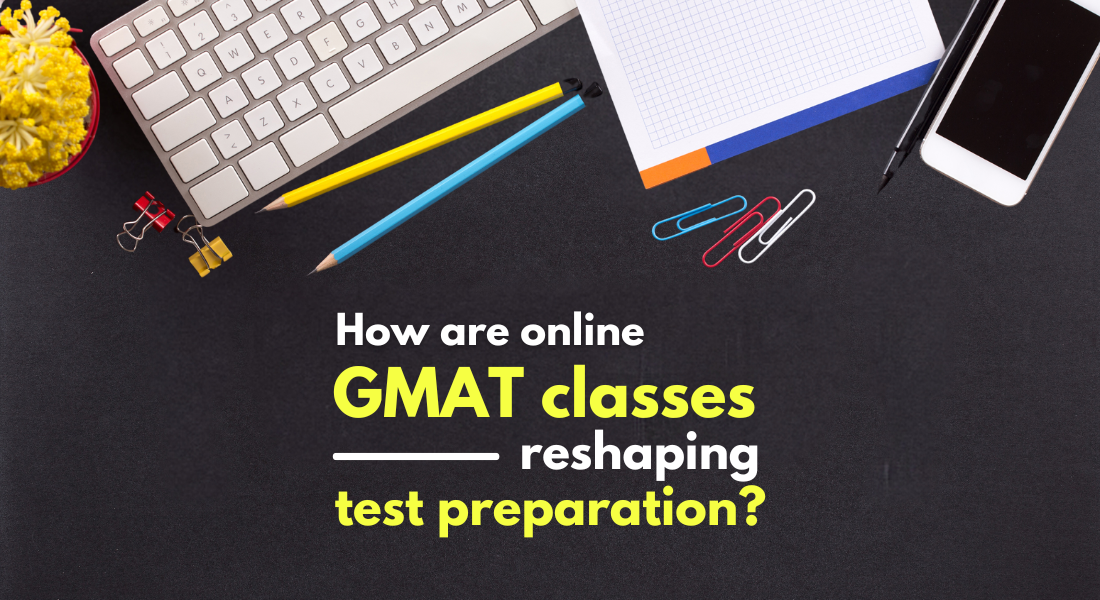
The Graduate Management Admission Test (GMAT) is for those applicants who wish to undertake business graduate studies from one of the premier institutes. The GMAT test is designed to help thousands of applicants dream of studying in a business school come true. This test proves the commitment and eligibility for the MBA program and helps demonstrate problem-solving abilities and critical reasoning skills.
Submitting a strong GMAT score means that the applicant has a high selection rate. To score well in a GMAT test, it is essential that the applicant takes some coaching from a reliable mentor. In the technological age, GMAT physical training has been replaced by Online GMAT Classes where a competent teacher covers all the doubts of the students.
Let us first understand a few details before we discuss the Online GMAT Classes.
Why should you take the GMAT test?
The GMAT test analyses the abilities of the applicant in mathematical concepts and English language skills. The GMAT does not evaluate your job skills, motivation or interpersonal skills. The test should be undertaken to check the basic understanding of foundational principles. However, even for this, the preparation is crucial, and the candidate should have a good base of foundational understanding of the subject to get a balanced score. With English and maths, the GMAT test is basically testing your logical application of ideas and reasoning. On how well you can think critically about a situation, analyze information, and undertake problem-solving under timed conditions.
The maximum score that can be achieved in the GMAT test is 805 and the minimum score should be of 205. The time limit of the test is 2 hours and 15 minutes and consists of 3 sections that you can take in any order.
There are multiple reasons why you should take the GMAT test. The most notable ones are –
Business schools highly regard the GMAT as it indicates a candidate’s work ethic and preparedness for their program.
- Being a standardized test, the GMAT enables schools to compare applicants from diverse backgrounds and regions, making it the preferred choice over other tests.
- With its global recognition, a GMAT score grants candidates equal footing for programs in 110 countries, fostering fair competition amidst varying academic and professional backgrounds.
- Admissions officers emphasize the importance of a good GMAT score, citing it as evidence of a candidate’s dedication to preparation and foundational knowledge, crucial for MBA readiness and scholarship opportunities based on GPA, GMAT score, and interview performance.
What is the format of a GMAT test?
There are three prime evaluation areas of the GMAT test
1. Quantitative Reasoning
The quantitative section of the GMAT assesses mathematical proficiency and numerical literacy, evaluating your capacity for reasoning and problem-solving. It gauges skills essential for disciplines like finance, accounting, and managerial statistics. This segment comprises problem-solving questions that necessitate a grasp of fundamental concepts in arithmetic and elementary algebra.
2. Verbal Reasoning
The verbal section of the GMAT assesses skills of the applicant in basic English by testing their reading comprehension and critical reasoning. The student should have the capability to comprehend written content, infer meaning, and assess arguments. This part includes two types of multiple-choice questions: reading comprehension passages, which can be up to 350 words long, followed by questions testing your interpretation, inference, and identification of logical relationships; and critical reasoning questions, which assess your ability to draw conclusions from brief arguments.
3. Data Insights
This segment assesses candidates’ capacity to comprehend and interpret data presented in various formats, including tables and graphs. It mirrors the modern business environment where managers must synthesize data from diverse sources to discern patterns, make decisions, and resolve business challenges. The Data Insights section of the GMAT comprises 20 multiple-response questions, encompassing five distinct question formats: multi-source reasoning involving data from multiple sources, table analysis using sortable tables, graphic interpretation utilizing charts or graphs, two-part analysis integrating quantitative and/or verbal information, and data sufficiency tasks requiring analysis of quantitative problems and identification of relevant data points.
How do you select the Best GMAT Online Coaching?
Several factors come into play when one has to determine if they have selected the best GMAT Online Coaching.
- Track record and reputation – If the coaching service has a good track record of students performing well in the GMAT test after learning from them and there are positive reviews from the students in the past then you have selected the best GMAT online coaching for yourself. Some testimonials will give you insights on the same.
- Knowledgeable mentors – The coaching should have experienced and knowledgeable instructors adept at effectively teaching GMAT concepts.
- Awareness of the Course Content: The teachers should have a comprehensive understanding of the coursework, and they need to provide the material to the students which is relevant
- Flexibility and Accessibility: Choose a coaching program that offers flexible scheduling and access to course materials, allowing you to study at your own pace and convenience.
- Practice Resources: The Coaching center you provide you mock papers and trail test papers that will help you prepare for your GMAT test in time.
- Technology and Support: The learning platform for Online GMAT classes should be user-friendly and have tools of interactive learning. There should be customer support offered for the technical issue as well.
- Success Rate: Research the coaching program’s track record of success, including average score improvements and admission rates to top business schools.

